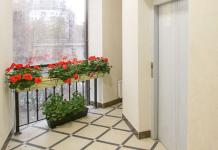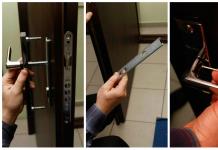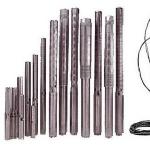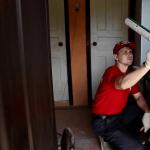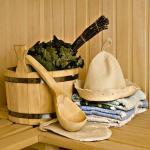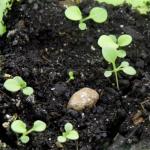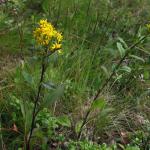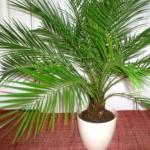Summer residents determine whether to plant leeks for seedlings in 2020, based on the lunar calendar. Botanists remind. You can get a good harvest only if you take into account the accompanying factors. The first is the climatic features of the region. It implies the minimum and maximum temperature range, humidity level, the likelihood of frost. The second factor is the characteristics of the soil and the selected variety. Planting a vegetable according to the lunar calendar occurs in one of two ways - by seeds or using bulb sets.
The timing of the ripening of vegetables
Harvest time depends on several factors. The first is varietal characteristics. Early ripe varieties are removed from the ground in mid-August or early September. Traditional types of onions remain in the ground until mid-September. Late-ripening varieties developed for regions with a cold climate should not leave the ground before mid-October.Botanists make a reservation. The "plus" of early-ripening varieties is the ability to get a faster harvest. A fly in the ointment in a barrel of honey will be the fact that early-ripening varieties have a minimum shelf life. The climatic features of the region and the characteristics of the soil are the second factor affecting the ripening time of the vegetable:
- soil acidity;
- strong wind;
- drought;
- frosts;
- humidity level and so on.
Regardless of the variety chosen, leeks are harvested before the onset of full-fledged cold weather. Focus on the temperature background. As soon as the thermometer drops below minus 10-12 ° C, the vegetable is removed from the ground.
On a note!
If the gardener wants to dig up root crops in July or August, then planting onions is carried out denser than necessary.
Compliance with the terms of planting seedlings by region

There are several recommendations when planting leeks in a greenhouse for seedlings in 2020 according to the lunar calendar, given the region. The first rule is that in areas with an unstable climate and prolonged cold weather, a vegetable is first planted in a greenhouse. The less temperature shocks the seedlings endure, their immunity is higher there. The second rule is that transplantation to a permanent place in the open field is carried out from April to May 2020. The main thing is to monitor the temperature background. You can start transplanting immediately after the thermometer stops dropping below + 15 ° С + 17 ° С.
| Region | Term | Purpose and place of sowing | Variety ripening rate | Notes |
| Landing in the European part and the Moscow region | From mid March | For seedlings on a windowsill or in a greenhouse | early ripening, late ripening, mid-ripening | Starting from mid-April, landing is carried out under a film, and transferred to open ground at the end of April or at the beginning of May, taking into account weather conditions |
| Landing on a site in the Russian Urals | Early-mid May | In a greenhouse or on a windowsill for seedlings | Mid-ripening and early-ripening |
|
| Landing in the regions of Siberia | Exclusively in a greenhouse or greenhouse | early ripe | No need for a transplant |
|
| Regions with a predominantly warm climate | In the greenhouse for seedlings | early ripe | Transplantation into open ground is carried out immediately after the appearance of at least 4 full-fledged leaves. |
|
| Southern regions | Directly into open ground |

Regardless of the region, landing at a permanent place is carried out in a checkerboard pattern. In the northern and northwestern regions of the country, for example, in the Leningrad and Murmansk regions, landing is carried out from 12 to 15 hours. Astrologers have determined the specified time period as the most optimal. In the southern regions, the landing is carried out from 19 to 20 hours. Solar activity subsides in the evening, providing green spaces with comfortable conditions.
Choice of time for picking

Growers cannot come to a common denominator when it comes to picks. Opponents and supporters of the procedure give a lot of arguments in favor of their point of view. Only one fact does not cause controversy among the warring parties. Do not confuse picking and transplanting. Picking is an agrotechnical manipulation during which leeks are transplanted from one pot to another. At the same time, pinching the end of the root is carried out.
Transplanting - a procedure during which green spaces are transplanted, for example, from a pot into open ground. Picking is carried out in the northern regions and in areas with an unstable climate. The procedure allows the bush to direct all the nutrients it receives to the formation of a root crop, and not an unproductive green mass.
On a note!
Almost all varieties of leeks do not respond well to picking. If the gardener does not have sufficient experience, then it is better to abandon the procedure. Minor mistakes will lead to a weakening of the immunity of seedlings, reduce the rate of development of the vegetable.
The picking time is chosen taking into account the characteristics of the variety. Mid-season varieties of vegetables are processed after 35-40 days from the moment of planting. Late-ripening varieties dive 50 days after planting, and early-ripening - after 30 days. The procedure is carried out in small pots, the diameter of which is not more than 4-5 cm. If the summer resident does not want to mess with a rather complicated procedure, then you can use the following recommendation. Seedlings are placed in peat pots. In this case, there is no need for picking.
Terms of transplantation to a permanent place

The timing of planting leek in open ground for seedlings in 2020 is chosen, taking into account the speed of development of the green space. Astrologers urge to exclude the dates of solar and lunar eclipses:
- 22nd of May;
- 21st of June;
- July 20.
Everything else depends on the experience of the summer resident. As soon as at least 3-4 full leaves appear, the vegetable is transplanted from a temporary container to a permanent place. The soil is prepared in the fall or 3 weeks before the planned transplant:
- garbage disposal;
- removal of traces of the previous crop;
- digging;
- acidity level control - the vegetable does not tolerate acidic soils, so the indicator is stabilized by adding 1 kg of ground limestone for every 1 m² of land;
- application of complex fertilizers at the rate of 2 kg per 1 m².
When choosing a landing site, the summer resident keeps in mind the rules of crop rotation. Carrots, celery, strawberries, and beets are placed next to leeks. It is recommended to plant leeks in the beds where legumes, tomatoes, and potatoes used to be. The main rule of crop rotation is that you cannot plant leeks more than 3 times in the same place. The general landing rules are as follows:
- V-shaped grooves are made on the site;
- the depth of each does not exceed 13 cm;
- the distance between the grooves is 20 cm;
- row spacing is 35 cm.
Harvest dates according to the lunar calendar

Astrologers have identified the most favorable days for collection in the table. In August, we are talking about the time period 2-3, 11-12, 16, 20, 29-30. In September, the harvest is carried out on 8-10, 14-15, 19-21. If the lunar calendar is not at hand, then they are guided by the heavenly body. Harvest on full moon days:
- June 5;
- 5'th of July;
- August 3rd;
- September 2;
- 2 October;
- October 31.
Astrologers assure that the harvest harvested on the indicated dates is stored the longest. At the same time, you need to follow the vagaries of nature. If weather forecasters predict an imminent significant cooling, then it is worth hurrying with the harvest. Leek should not be left in the ground if the temperature drops below + 8 C. Compliance with the recommendations below reduces the likelihood of losing part of the crop:
- 2 weeks before the planned removal from the ground, additional roots are sprinkled with soil;
- 6-7 days before harvesting, the leeks are covered with an opaque coating;
- as soon as the onion is dug up, the roots are shortened by 1.5-2 cm;
- cut the leaves to 2/3 of the length.

Store harvested leeks in the basement. A cool place with a stable level of temperature and humidity will reduce the likelihood of loss of vegetable characteristics.
Manipulations with leeks for seedlings are carried out taking into account the lunar calendar, the climatic features of the region, and the characteristics of the vegetable variety. The colder it is in the area, the faster you need to harvest. Unfortunately, early ripening varieties cannot be stored for a long time, so it is worth weighing all the pros and cons in advance. Landing is carried out in a greenhouse or immediately in open ground, taking into account the temperature background in the region. Planting leeks, unlike harvesting, cannot be done during solar eclipses and full moons.
Leek is not a very common vegetable crop today, although it is a very tasty and healthy product. Mostly foreign leeks are sold on the shelves of supermarkets, and on our sites it is still a rare guest. This is largely due to the fact that gardeners believe that the culture is difficult to grow, that it is very difficult to grow it on your site, but in fact, all this is absolutely untrue.
Leek is a biennial crop that does not form bulbs. The value of this product is in its stems that appear after sowing in the first year of life. In the second year of life, a peduncle grows on the onion, and seeds are formed. Leeks have a long ripening period, approximately six to seven months. Therefore, it is better to grow this plant in seedlings.
Planting leeks for seedlings in 2018
If you look into the plantings, you can see that in the month of February it is recommended to plant leeks. Successful landing days will be 3.02, 04.02, 11.02, 12.02 and the period from 15.02 to 17.02. It is not recommended to plant from the seventh to the ninth of February and 22.02. You can grow seedlings in the house in planting containers, or you can sow seeds directly into the ground. The first way is more optimal. It will be possible to harvest leeks in early September.
First you need to prepare the seeds. First of all, they need to be disinfected from various fungal diseases, for this, place them in hot potassium permanganate for twenty minutes. After that, the seeds should be put in cold water for half an hour so that they harden. The next step is seed germination. To do this, you need to soak them for five days in a damp gauze and leave in a warm place. After the sprouted part, using tweezers, carefully place the seed in the soil. Planting depth is approximately one and a half centimeters. Try to maintain a distance of two to two and a half centimeters between seeds, then the crops will not grow very thickened. For planting leek seeds, it is good to take a mixture of soddy soil along with peat and humus. The container where you will plant the seeds should be filled with this mixture, lightly tamped and watered.
In ten days, the first shoots can be expected. Before they appear, you need to regularly moisten the soil. Seed boxes can be covered with foil, but then they need to be aired a couple of times a day. For this culture, it is important not to allow either waterlogging or drying out. Be sure to ensure that the plantings have enough light. The optimum temperature for normal germination should be around 20°C. After the emergence of seedlings at night, the temperature must be lowered to 15 ° C, otherwise the plants will stretch up very quickly, while remaining weak. After the emergence of seedlings on the tenth day, you can carry out the first top dressing using liquid fertilizer for this. After another ten days, top dressing should be repeated with the same fertilizer. In mid-April, leek seedlings can be transplanted into a greenhouse, and into the ground in early May, using a film cover for planting at first.
Leek has many valuable qualities, so we suggest that you familiarize yourself with the dates when planting leeks for seedlings in 2017.
Nothing complicated
This onion is useful for an abundance of vitamins, minerals and even has medicinal properties. It is very tasty in salads and when added to the first and second courses.
However, our gardeners are in no hurry to sow it on their beds. This is probably due to the incorrect assumption that growing these greens is very difficult and troublesome.
In fact, such onions grow in the same way as many vegetables.

, this is a biennial culture. Unlike the onion counterpart, it does not form bulbs. But the whole value lies not at all in the bulb, but in the stem and feathers.
These stems grow already in the first year from sowing, and in the second year the plant throws out a peduncle with seeds, preparing for reproduction.
The stalk of the onion is thick, much thicker than that of an ordinary onion, the feathers are long, strong, thick, and bluish in color.
To form such a stem and strong feathers, the plant has to mature for 6-7 months. Therefore, in our areas, where there are very few warm days, it should be grown in seedlings.

What the calendar says
The best time for sowing is the month of February. In this case, the plant will have enough time to develop and give a bountiful harvest.
The lunar calendar gives clear recommendations on when to sow leeks for seedlings in 2017. If you follow his advice, then the best days for sowing will be the 3rd, 4th, 11th and 12th of February. If someone did not have time to plant the seeds these days, it will be possible to start sowing from the 15th to February 17th. Onions planted at this time will be healthy, strong and juicy.
But the days from 7 to 9. 02. 2017, on the contrary, are considered unsuccessful for landings. It is possible that even then the seeds will sprout, however, it is better to save your strength and time so as not to waste them on frail, diseased and unproductive plants.
Of course, like all other crops, leeks will very painfully transfer crops to the new moon and full moon. These days, the moon has a special energy that plants can simply not cope with.

We sow leeks for seedlings!
Sowing leek is done in the same way as sowing other seeds. After the soil has been purchased, a sunny place has been chosen and planting containers have been prepared, the seeds should be prepared.
To begin with, it is recommended to hold the onion seeds in hot potassium permanganate for 20 minutes. This procedure will rid the plants of fungal diseases.
In order for young plants to perfectly tolerate temperature changes, they should be hardened. To do this, the seeds of potassium permanganate are immersed in cold water.
And only after such manipulations can you start germination. Seeds are placed in gauze, placed in a saucer with water and put in a warm place. There they should stay for about five days.
At this time, one must be especially careful - the water from the saucer can quickly evaporate, and it is impossible to allow the seeds to dry out, they will die. Therefore, you need to make sure that the marlechka always remains wet.
As soon as the seeds hatch, they should be placed in the soil. This must be done carefully, because the sprouts are very delicate, they can die from an awkward touch. It is better to plant the seeds with tweezers or the tip of a knife.
The hole for the seed should be 1.5 cm deep, but the distance between plantings should be from 2.5 cm to 3 cm.
After that, the crops should be watered with warm water.

Sowed? Taking care of seedlings!
If the soil is constantly kept moist, and the planting container is in a warm place (at a temperature not lower than 26 degrees), the first sprouts will appear in a week or 10 days.
It should be remembered that leeks do not tolerate excess moisture, however, they also do not like overdrying. He is very picky about the light.
The culture loves warmth, however, seedlings should not be kept in a room that is too warm. Due to too warm atmosphere, the sprouts will stretch and weaken. The best temperature regime is: during the day - 20 degrees, at night 15 degrees above zero.
On the 10th day after seedlings appear, it is worth feeding the plantings with liquid fertilizer and repeating the watering with fertilizer after another 10 days.
Seedlings are transplanted into the greenhouse in the middle of April, and into the beds - after the threat of return frosts has passed.
Leek is considered to be a valuable crop rich in vitamins. The vegetable is rich in carbohydrates, proteins, fats, sugar, starch and organic acids. There are various salts, dietary fiber, as well as vitamins C, A, E, B, H, PP in leeks. If you want to go into culture, you need to know when to plant leeks for seedlings.
Features of growing leeks through seedlings
Many people call leek pearl because of the high value of green leaves and bleached legs. Planting a vegetable is not too difficult if you follow the rules of agricultural technology.
The yield depends on many factors:
- climatic conditions of the growing region;
- selection of onion varieties for planting;
- preparation of containers and soil for sowing seeds;
- creating conditions for growing seedlings;
- carrying out agrotechnical measures at the seedling stage: watering, top dressing, pruning of leaves, hardening before planting in a permanent place.
Important! For growing leek seedlings at home, it is better to buy seeds of early varieties, then the harvest will be guaranteed in any region.

When to plant leeks for seedlings
The vegetative period of leek cultivation is on average 200 days from the moment of sowing seeds for seedlings.
It is necessary to take into account the time frame for planting onions in a permanent place:
- To get tasty and healthy products in September, seeds are sown in late February or early March. Such seedlings can be planted in a greenhouse.
- If young plants are grown on ordinary beds, then they start planting in the last decade of March.
- In more severe conditions, seeds for seedlings are sown at the end of April to plant seedlings in mid-June.
Attention! Not a single gardener will name the exact dates for planting leeks for seedlings, it all depends on the climatic characteristics of the region.

How to plant leeks for seedlings
The yield of onion beds depends on the grown seedlings. The fact is that it is grown on window sills, and in winter and early spring there is not enough light. There is another problem: improper preparation of containers, soil and seeds themselves before planting affects the quality of seedlings.
Selecting and preparing a container
For planting onions for seedlings, it is not necessary to use store containers. Suitable packs of milk, tea, yogurt, sweets or wooden boxes.
In recent years, more and more gardeners are growing seedlings of various crops, including leeks, in plastic disposable boxes and glasses, in a snail. There is one important condition for choosing containers: their depth must be at least 10-12 cm.

Attention! The use of peat tablets and cups allows you to grow leeks from seeds at home without subsequent picking. Plants do not tolerate transplanting well.

Seedling containers must be clean. Paper versions do not process anything. As for plastic and wooden utensils, they are washed with hot water before planting and doused with boiling water, in which potassium permanganate is dissolved.
Soil preparation
For planting seedlings, loose, nutritious and breathable soil is needed.
Important! Seeds often do not germinate in dense clay soil.
You can use ready-made compositions for seedlings, which are sold in specialized stores. But many gardeners prefer to cook it on their own.
Soil composition may vary.
If peat acts as the basis of the soil, then for 5 kg add:
- dolomite flour - 250 g;
- superphosphate - 50 g;
- urea - 30 g;
- potassium sulfate - 40 g.
For the second option you will need:
- peat - 1 part;
- garden land - 1 part;
- humus - 2 parts.
The prepared soil is sifted, filled with containers and spilled with boiling water with potassium permanganate.
Warning! In self-composed soil intended for growing leeks, there should be no insect larvae and earthworms.
Seed preparation

Seeds of all types and varieties of onions are difficult to germinate. In order to get green hooks faster, and the seedlings grew healthy, the seeds must be specially prepared before planting:
- Put the nigella in a linen bag and lower it for half an hour in a bright solution of potassium permanganate.
- Transfer the bag to cold water and soak for 30 minutes.
- Spread the seeds on a damp cloth, cover from above and germinate them for 7 days.
- Dry the planting material and place it in the prepared soil.

There is another preparation option: leek seeds are quickly dipped in a cloth bag into hot water before planting. Then - in the cold. After that, you can disinfect. This procedure accelerates the germination of seeds, kills spores of diseases.
Rules for sowing leeks for seedlings
You need to sow the seeds correctly in order to get high-quality planting material:
- Prepared soil is filled with disinfected containers, slapped and watered.
- Grooves are made in the boxes at a distance of 5 cm, if the sowing of leeks is carried out in cups, peat tablets, then a small hole is made, 1-1.5 cm deep. The seeds are buried in the boxes in the same way.
- Gently watered, covered with glass or transparent film to create a greenhouse effect.
- The containers are exposed to a well-lit window and maintain a temperature of 22 to 25 degrees.
- From time to time, the shelter is raised for ventilation and watering.
- After 2 weeks shoots appear, the film is removed. At this time, the temperature should be no more than 17 degrees during the day, and at night - 12, so that the leek seedlings do not stretch. A week later, the containers with seedlings are rearranged in a warmer room.
- Onion seedlings should be watered moderately so that there is no stagnant water. It can cause damage to the root system of the black leg.
Beginning gardeners can learn how to plant leek seeds in different ways, including in a snail, how to pick seedlings from the video:
How to grow leeks from seedlings
So, the sowing of seeds for seedlings has been carried out, now you need to take care of creating certain conditions for proper development. This applies to:
- air temperature;
- lighting;
- glaze;
- top dressing;
- picks;
- pen trimming;
- hardening.
Temperature and light
To grow seedlings, you need to monitor daylight hours. As a rule, lighting should be at least 10-12 hours. If the seeds were planted in February or March, then you will have to take care of organizing additional highlighting.
As for the air temperature, immediately after germination, it is reduced to 17 degrees during the day, and at night - no more than 14. This temperature is maintained until the seedlings are planted in open ground or a greenhouse.
Leek is a biennial plant. If after planting and in the future the air temperature at the seedling growing stage is high, then flower arrows will form in the first year. This will lead to the fact that the white leg will not work. At best, a green feather.

Watering and feeding
Planting and caring for leek seedlings is available to beginner gardeners. Timely moistening of the soil and top dressing of seedlings are supposed. Plants should be watered with warm water. The soil should not dry out, it should always be moist. Otherwise, the plants will begin to lag behind in growth.
Warning! Citizens growing seedlings for planting in the country should understand that tap water for irrigation is not suitable due to the chlorine content. As a last resort, it must be defended.
If the air in the room is dry, experienced gardeners advise spraying the feathers with a spray bottle. It will not only moisten the plants and soil, but also wash off the dust.
Young sprouts need feeding. The first time they feed the leek after 14 days from the moment of germination. The second top dressing - 7 days before planting seedlings in a permanent place.
Plants respond well to infusion of bird droppings. One part of the infusion should be diluted in 20 parts of warm water. If possible, compote "tea" is used for feeding. They can be watered planting leek every 14 days during the cultivation of seedlings.
Picking and pruning leaves
When growing seedlings of leeks in separate containers, peat tablets and cups, one step is eliminated. This applies to picking, which culture endures with great difficulty.
If the seeds were planted in boxes, then most likely the seedlings will be thickened. To get high-quality and unstretched seedlings, you will have to do a transplant.

How to dive correctly:
- Before planting, the plants are watered abundantly to make it easier to pick them out of the container with the ground.
- Using a fork, remove the onion along with the ground.
- Leek is planted in separate cups singly or in another container in increments of 3-5 cm into the hole.
- Pour the earth and press it with your fingers.
- Water the onions after planting.
Planting and growing leek seedlings involves another procedure - pruning the leaves. The onion feather is cut after 2 weeks before planting in the ground. The cut leaves should be no higher than 8-10 cm.
Important! This procedure increases the root system, and due to this, the stem thickens.
hardening
Since the seedlings are grown indoors, they cannot be immediately planted in open ground. 2 weeks before planting, the plants are taken out into the street, first for a few minutes, then the time is increased. You need to put containers in the shade.
Attention! If there is a strong wind outside, then the plants cannot stand it.

Diseases and pests
A tasty plant is liked not only by people, but also by pests. There are also diseases that this culture suffers from. Already when planting leeks for seedlings, disease prevention is carried out during seed treatment.
Of the pests that love to feast on plantings, they note the onion fly, or rather, its larvae, eating up the white stems of plants.
Diseases of leeks:
- black leg;
- neck rot;
- rust;
- downy mildew.
Plants rarely get sick and are damaged by insects if gardeners follow cultivation practices.
Diseases can also be avoided by using seeds that have been stored for 2-3 years. During this time, viruses and pests that have appeared on the surface of the planting material have time to die.
Equally important are preventive measures:
- From an onion fly, onion seedlings are watered with salt water: 350 g of salt are taken for 10 liters of liquid.
- To prevent onion rust that affects leaves, plantings are treated with fungicides.
- If the seedlings show signs of powdery mildew, the plants are uprooted. The soil and the remaining bulbs are treated with copper chloride and Fitosporin.
Conclusion
If a novice gardener decides to grow a new crop, he needs to know when to plant leeks for seedlings. Of course, you will have to work hard, because the plants will stand on the windowsill for a long time. But in the fall you can get a rich harvest of healthy leeks.

